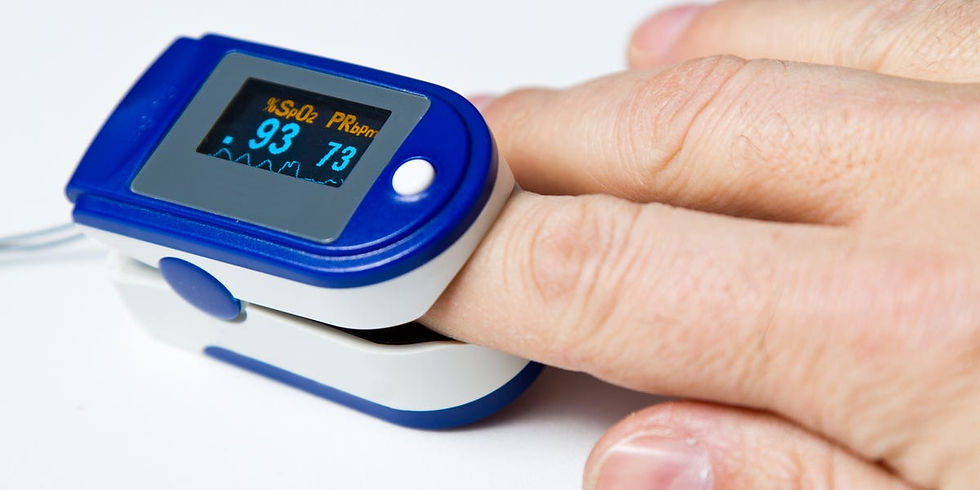Medical devices to keep at home to keep track of your wellbeing on a daily basis.
- Naheda Khan
- May 9, 2021
- 3 min read
It would help a lot if you can provide your doctor with reliable and clear details regarding your data. Along with routine wellness checkups, having accurate reports on your health makes it easier for the doctor to detect any disease or ailment. Low-cost devices that monitor the vitals, such as blood pressure, blood oxygen levels, respiration rate, and heart rate, can be useful at times.
When it comes to purchasing medical devices for personal use, it is strongly advised that you consult the doctor for the best recommendations. Here are seven medical devices you should have at home to keep track of your health on a daily basis.
Note: This article does not endorse any specific device or brand. Before using any healthcare system, consult with your doctor or a medical practitioner for the proper use and accuracy standards. This article's sole purpose is to educate readers about simple personal health monitoring devices available in India, and it contains no information that has been vetted by a medical practitioner or organization. Also keep in mind that certain products can interact with pacemakers or other medical devices, so see your doctor before using it.

1. Track your heart condition with a portable ECG monitor.
A portable mobile ECG monitor with mobile companion software allows you to easily report ECG on a regular basis and track your heart health. These recordings became a valuable source of evidence for physicians, allowing them to detect any anomalies early on. Request advise from a medical practitioner on the use of a portable personal ECG monitor. (The image displayed is used for illustration purposes.)

2. Track your blood pressure with the aid of an automatic electronic blood pressure monitor.
Another useful device is an automated electronic blood pressure control. Choose a computer that also displays the pulse rhythm. Inquire about blood pressure monitors with a medical professional. (The image displayed is used for illustration purposes.)

3. A fingertip pulse oximeter can be used to monitor blood oxygen levels.
An oximeter is a device that tests the amount of oxygen in your blood as well as your breathing rate. It's a compact and inexpensive instrument that only requires you to insert your index finger to obtain readings. Request oximeter advice from a medical practitioner. (The image displayed is used for illustration purposes.)

4. A glucometer is a device that measures blood glucose levels.
A glucometer is a device that monitors blood glucose levels. However, it is possible that it would not be needed in all cases. Glucometers are typically prescribed by physicians whether or not you or any of your family members need them. (The image displayed is used for illustration purposes.)

5. The medical warning system is an emergency program for the aged.
A medical alarm system is a useful gadget to have at home if you have elderly relatives. At the touch of a button, they will summon your assistance if they are feeling uneasy. In a medical emergency, pressing a button on a computer that hangs around someone's neck is much better than finding the phone and dialing a number. Inquire about medical warning devices with a medical practitioner. (The image displayed is used for illustration purposes.)

6. Pressure relief devices are used to treat pain.
Having a pain reliever on hand at home may be useful at any moment. Hot pads, massagers, and even nerve stimulators are also examples of pain management products. Consult the doctor to determine the appropriate device for your needs. (The image displayed is used for illustration purposes.)

7. Using a contactless IR thermometer, you can keep track of the temperature of your blood.
A contactless infrared thermometer is a vital tool that is desperately needed. Inquire about infrared thermometers with a medical practitioner. (The image displayed is used for illustration purposes.)
To help their work, Newsmusk allows writers to use primary sources. White papers, government data, initial reporting, and interviews with industry experts are only a few examples. Where relevant, we also cite original research from others respected publishers.
SOURCE: gadgetsnow.com
































Comments